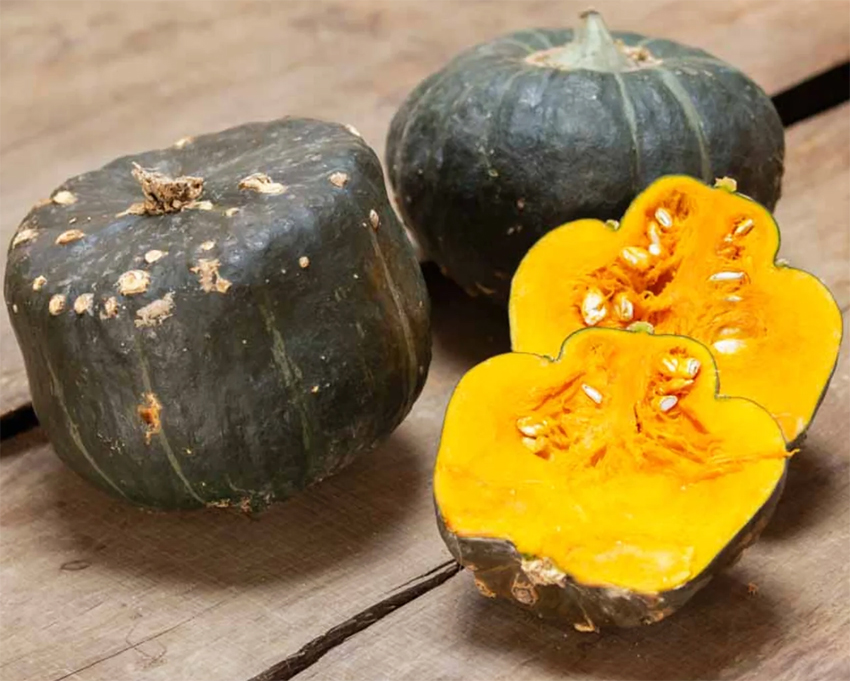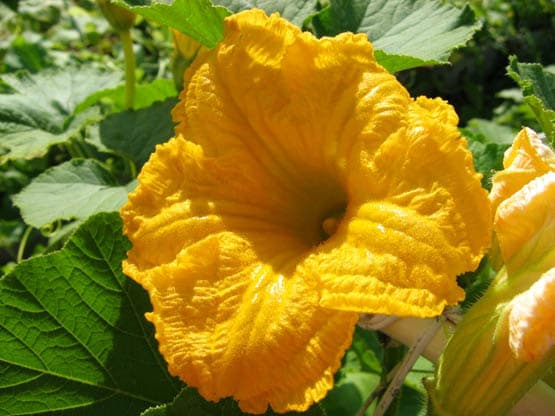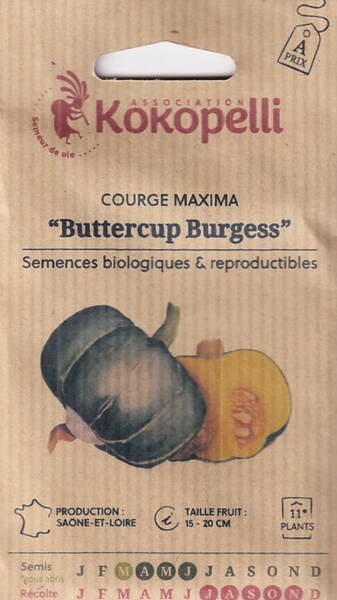Main Characteristics:
-
Type: Bush (compact, vines up to 1.5 m), variety of the 'Buttercup' group
-
Origin: USA, 1952 (improved version of the 'Burgess' variety, 1931)
-
Fruit Shape: Unique, turban-shaped (flattened with a "belt")
-
Rind Color: Dark green with contrasting grey-green stripes
-
Flesh Color: Bright orange-red
-
Fruit Weight: 1.5 – 2.0 kg
-
Fruit Diameter: 15 – 20 cm
-
Taste: Very sweet, rich, nutty undertones
-
Flesh Texture: Dense, not fibrous.
-

Key Advantages:
-
Unique Shape: Decorative turban-shaped fruits will decorate the garden and interior.
-
Bush Type: Compact plant, ideal for small plots.
-
Ideal Flesh: Very dense, sweet, with high carotene content.
-
Excellent Storage: Stores for 3-6 months without loss of taste.
-
Culinary Versatility: Suitable for raw consumption, creamy soups, baking, side dishes, and desserts. The flowers are also edible.
Cultivation Guide:
Sowing:
-
Timing: Late April – May (for seedlings), or directly in the ground in late May – June, when the soil warms up to +14...+15°C.
-
Sowing Depth: 2-3 cm.
-
Planting Scheme: 70x70 cm. The bush type does not require much space.
Soil and Conditions:
-
Best Soils: Light, fertile loams, sandy loams, chernozems. The site should be sunny and sheltered from the wind.
-
Temperature: Heat-loving. Optimal growth temperature is +25..+28°C. Does not tolerate frost.
-
Watering: Abundant, especially during the growth of vines and fruits (10-15 liters per plant).
-
Precursors: Best are cabbage, onion, potatoes, root vegetables. Do not plant after cucumbers, zucchini, patty pans.
Care:
-
Feeding with organic and mineral fertilizers.
-
Loosening and weeding.
-
Formation: Leave 3-5 of the strongest ovaries on one plant to obtain large fruits.
Harvest and Storage:
-
Harvest Time: August – September, before the onset of frost.
-
Signs of Ripeness: Drying of the stalk and rich rind color.
-
Storage Conditions: In a dry, cool room. Fruits store for 3-6 months.
-

Health Benefits:
Pumpkin 'Buttercup Burgess' is a treasure trove of vitamins and beneficial substances:
-
Rich in Carotene and Vitamins: High content of vitamins A, C, E, B group.
-
Source of Microelements: Contains potassium, iron, magnesium, cobalt.
-
Beneficial for Digestion: Fiber and pectins improve digestion.
-
Dietary Product: Recommended for cardiovascular diseases, for regulating metabolism.
* How to Best Prepare Buttercup-Type Pumpkin?
In the kitchen, this pumpkin variety can be used cooked or raw, in both non-sweet and savory dishes.
Its dense, sweet flesh, rich in vitamins A and C and fiber, is perfect for oven roasting, pecan pie, or creamy vegetable soup.












